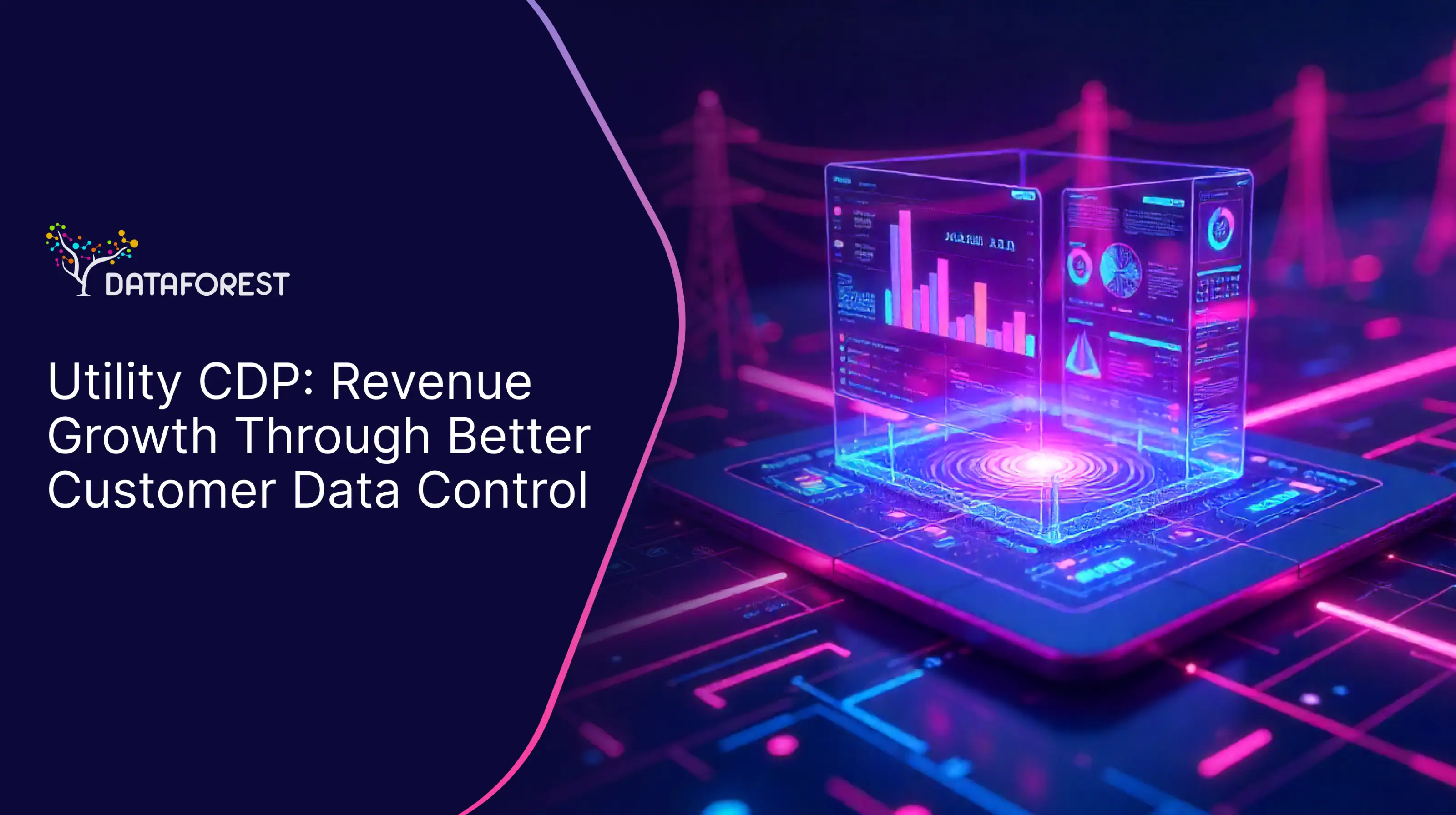
Digital Transformation in Customer Service
We are more informed about both the technical architecture and the customer service operations; thus, we introduce best practices and methodologies and lead the work of the team to embrace everything, starting with AI-based tools and omnichannel to data-driven analytics dashboards and automated workflows. This makes the digital transformation of enhancing customer service to be stuck and provide actual value.




PARTNER

PARTNER
FEATURED IN
.webp)
01
Omnichannel System
Brings together all channels of interaction with customers under a single system that runs smoothly. Your crew receives only one dashboard that is capable of managing all social and email, as well as chat and phone functions, as customers experience smooth channel switches. This system is important in the digitalization of customer experience.
02
Smart Assistants
Chatbots and virtual assistants address standard inquiries 24/7 and leave your human agents to deal with complicated scenarios. Such AI-based assistants are trained with every interaction, becoming smarter and more useful with time, contributing to the digital transformation as a whole and the optimization of customer service.
03
Custom Portals
Every customer receives his/her own digital space according to their needs and background with your company. Such portals provide customers with convenient access to their data, orders, support tickets, and personalized recommendations driven by integrated solutions - as part of a successful digital transformation of customer experience.
04
Modern CRM
New generation CRM systems not only manage contacts but also offer customer intelligence and automation capabilities. They trace all communication, anticipate customer actions, and assist you in offering more focused care, so they become a crucial part of the digital experience transformation of the customer.
05
Predictive Analytics with AI
AI works on the trends in customer behavior to foresee the needs even before customers voice their needs. This assists you in being proactive in solving problems, proposing products or services that are relevant, and developing wow in the digital transformation customer experience by being innovative in predictive technology.
Digital Transformation for Customer Service Prospects
Every digital transformation of the solutions of customer service is based on the anticipation of the needs of customers using intelligent technologies instead of merely responding to the issues. With the adoption of combined solutions and cloud services, teams can expand their support more easily.
Transforming Your Customer Service Into A Digital Powerhouse
We may describe how we can transform traditional customer support into a new, technologically advanced operation with digital transformation to enhance customer service.

Reality Check
See what you have - where your team is not doing well, what tools are sitting idle, and where the customer is feeling frustrated. Consider it an online transformation consulting customer experience health check-up.
01
.svg)
Building Your Data Backbone
Getting all your customer details to get along together. There will be no longer moments of apologizing and the need to check a different system. The given initial step facilitates the scaled digital customer service transformation.
02
.svg)
Channel Mashup
Combining all those channels that customers contact you - be it via sliding the DM, an email, or going traditional and using a phone number - all on one screen. Customer experience during digital transformation is improved using unified interfaces.
03

AI Buddy System
Training robots to cope with the easy stuff. Imagine smart chatbots that get it right and can guess what your customer requires even before inquiring- a smart move towards the digitalization of the customer service execution process.
04

Robot Workforce
Allowing automation to work on the tedious. The tedious activities your team is tired of? Another driver toward effective digital transformation of customer experience is a bot.
05

The Personal Touch 2.0
Developing customer experiences that seem to be personal. Similar to the presence of a digital concierge who has all the information, driven by the digital principles of customer experience transformation.
06
.svg)
Team Power-Up
Training your people on all this new technology. Due to the necessity of even Iron Man to know how to put his suit on, team enablement is the key to a sustainable digital transformation of the customer experience.
07

Numbers That Matter
Installation of smart dashboards that report on what is working. No speculation, precise data, and real outcomes are the basis of the efficiency of solutions based on the digital transformation of customer services.
08
From Pain Points to Power Moves
A digital change of customer service solution integrates AI-based automation of the processes (to provide speed and efficiency) with new tools that allow human representatives to provide more adequate service.

Wait Times
Victorious by introducing AI-based chatbots to respond immediately to first-time customers and new queue management, which prioritizes cases according to their urgency. Install automated callback and give a precise wait time estimate, which is a characteristic of digital transformation customer experience optimization.
.svg)
Channel Gaps
Resolved by developing a singular knowledge base, which will be automatically synchronized across all systems, and educating employees on the best practices in the omnichannel. Introduce real-time data exchange of channels to ensure that the latest context of customer interaction is constantly available to the agents to transform the customer experience digitally.

Generic Service
Stored with the help of AI to examine customer history and behavioral patterns to develop specific interaction techniques. Digital transformation consulting, Customer experience, deploy innovative CRM systems that give agents a real-time personalized insight into customers as a part of digital transformation.
.svg)
Agent Burnout
Addressed through the implementation of AI to manage repetitive tasks and having remote assistance tools that simplify the solving of complex problems that agents can now access. Establish a system of distributing workloads evenly and introduce training on new technological tools - one of the pillars of sustainable digital transformation of customer service.

Higher Customer Loyalty
- Retains customers with flawless regular service.
- Make satisfied customers repeat customers.
- Cuts churn cuts personal with every contact, which is the result of the successful digital transformation of the customer care.
.svg)
Reduced Support Costs
- Robots do the routine work so the businesses can save both money and time, which is a major outcome of the digital transformation of customer service programs.
- Brings superior allocation of resources, reducing costs with the digital transformation of customer experience.
- Reduces support costs through clever technology brought about by digital customer experience transformation.

Faster Response Times
- Maintains customer interest by responding to them fast, which is a feature of digital transformation customer experience.
- Accelerates the process of solving frequent questions with the application of digital transformation of customer service tools.
- Shortens the waiting time through efficient, fast workflows with the addition of digital transformation consultancy and customer experience solutions.

Personalized Service
- Makes all customers feel that they are receiving a customer experience.
- Data is used to provide relevance to individual responses based on customer experience strategies via digital transformation.
- Develops brand loyalty by fulfilling the customer service needs that are unique through the use of digital transformation customer service tools.
.svg)
Greater Staff Efficiency
- Digital transformation of customer service processes liberates agents to deal with more challenging problems as the company frees them from routine jobs.
- Increases productivity through the automation of services when dealing with small stuff, which is one of the advantages of digital transformation in enhancing customer service.
- Provides agents with equipment to solve problems faster.
.svg)
Better Data Insights
- Target trends to pursue a more active service strategy.
- Utilizes real-time information to present areas where improvement is necessary through digital transformation to enhance customer service systems.
- Projections must remain proactive of customer demands.
Related Articles to Digital Transformation for Improving Customer Service
All publicationsFAQ On Digital Transformation Customer Service
How will digital transformation affect the existing support staff?
The digital customer service process makes monotonous tasks automated and enables the support staff to concentrate on more valuable customer contact. These tools increase productivity as queries that are of high volume are managed more effectively. Other employees would require training so as to be at ease with the new technology.
How long does the implementation process of new technologies take?
The average time frame of most digital transformation customer experience efforts is a few months, based on the scope and existing systems. The gradual introduction will allow us to get used to the new technology without significant inconveniences. The transition becomes smooth and seamless with the right direction.
How is customer data security ensured during digital transformation?
To achieve customer experience digital transformation, data protection is essential, where encryption, access control, and compliance standards are used. The security measures are responsive and effective due to regular audits and updates. Modern technology, such as artificial intelligence, is used to detect and mitigate possible security risks.
Is it possible to integrate new solutions with existing systems?
The majority of digital transformation customer service systems have API-based integration. The integration allows the integration of systems in communications. It is a simple means of enjoying the fruits of the new technology without necessarily reengineering everything.
What technologies are used for personalizing the customer experience?
It is based on AI, ML, and CRM systems that are used to translate the digital customer experience by personalizing the responses based on the smart use of data. The use of automated applications such as chatbots offers personalized communication that relies on previous interactions of the customers. Collectively, technologies provide a more personal and relevant customer experience.
How is the effectiveness of customer service digital transformation measured?
Customer satisfaction, response time, and cost savings are also KPIs that are important in measuring a successful digital transformation in enhancing customer service. These KPIs give real-time information on what is working and which side needs to be improved. These lessons allow changing and optimizing the strategy with ease.
Is special training required for employees and customers?
The staff and the customers would be guided to adjust to the digital transformation of customer service tools. Customers can find automated systems easy to navigate with a guide or support that will be provided quickly. Training and support make sure that everybody makes the very best of the enhanced experience.
How are technical failures in automated systems addressed?
There is also proactive monitoring that guarantees a smooth functioning, a critical component of the dependability of the customer in digital transformation. Should an issue emerge, there is a notification of support teams to intervene, and periodic maintenance and upgrades will further minimize failure to keep systems operating in the long term.
Let’s discuss your project
Share project details, like scope or challenges. We'll review and follow up with next steps.

.svg)
.svg)













































